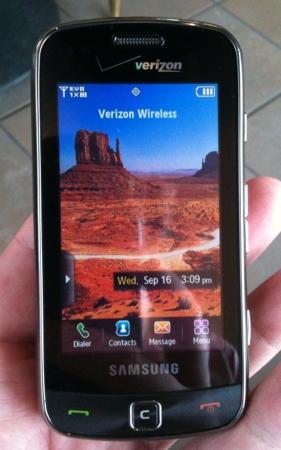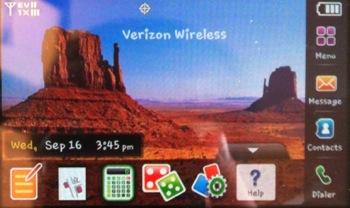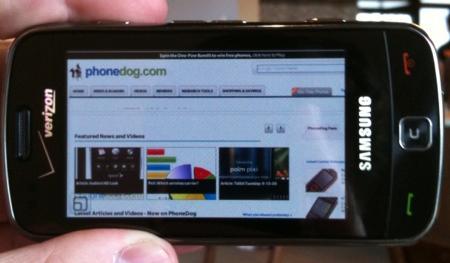
Coming in as the replacement to the quirky Samsung Glyde, the new Samsung Rogue fell into the marketplace with a reputation to defend - and if my first impressions are any indicator, this device goes above and beyond expectations. In my opinion, the success of the Rogue can be factored into one of two main arenas: the physical design of the device itself, and the TouchWiz user interface. It's no secret that Verizon took a more hands-off approach with the device's UI this time around, in favor of Samsung's TouchWiz system. On another note, this is the first non-smartphone device from the carrier to require a data plan. Is it worth the extra money per month?
Needless to say, I'm very impressed with the Rogue. Offering a 3.1-inch OLED screen (480 x 800 pixels), accelerometer, 3-megapixel camera, 3.5mm headphone jack (finally; thank you Samsung), microSD card slot, EVDO Rev. A, and GPS, Samsung somehow managed to sneak it all into a package that's slightly thinner than its predecessor. Barring battery life being less than perfect (fairly typical of a CDMA device) and the keyboard being a bit funky, early reviews are looking good. On my end, the keyboard is the only real drawback I came across in my initial testing. The directional keys are placed in a rather strange spot on the device, causing Samsung to have to shift the keyboard to the left a bit. Being used to the standard keyboard layout, it has taken me some time to get used to it, but it's one of those things that I imagine to get easier as time goes on.

Next, the user interface. Though there's a minor Verizon influence through the device (and frankly, you see this with almost any phone on any carrier), it's mostly unbridled TouchWiz goodness through and through. After spending some time with it, I'm so pleased that Verizon opted to keep the TouchWiz interface intact, instead of going with the stock "Verizon" look. Granted, Verizon has worked hard to modify their stock interface for the better over the past few years (I'm sure we all remember the original, complete with boring red bars), but it's nice to see a near 100 percent Samsung influence. Complete with goodies like threaded text messaging and a full HTML web browser, the customization options available in TouchWiz are really what makes the device great. Customizable widgets can be added or removed from the home screen, making the Rogue a direct reflection of the user. Want a Twitter shortcut? You got it. Don't want the clock? Take it off. The choice is yours.
Stay tuned for my full written review, and in the meantime, check out Noah's unboxing video!
